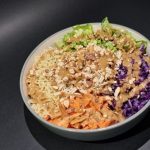Vitamin A is an essential vitamin that the body needs for growth and development. It is also vital for cell recognition, vision, immune function, and reproduction.
It also helps the heart, lungs, kidneys, and other organs function correctly.
Vitamin A deficiency is rare, If it happens, it can lead to eye problems, including night blindness.
Types
Vitamin A occurs in different forms. The list below will provide more detail.
- Preformed vitamin A occurs in meat, fish, and dairy produce.
- Provitamin A is present in fruits, vegetables, and other plant-based products.
- Retinol is the main active form of vitamin A in the blood. Retinyl palmitate is the storage form of the vitamin.
- Beta-carotene is a provitamin, or a precursor of vitamin A that occurs in plants — especially dark colored fruits and vegetables and oily fruits.
Benefits
Vitamin A contributes to various bodily functions and helps prevent a range of problems, including:
- night blindness
- infections, especially in the throat, chest, and abdomen
- follicular hyperkeratosis, which can lead to dry, bumpy skin
- fertility issues
- delayed growth in children
Food sources
The form of vitamin A will depend on the source.
For example, ready-made retinol — which is the active form of vitamin A — only comes from animal sources.
The richest sources of retinol include:
- organ meats, such as liver
- fatty fish, such as tuna and herring
- milk and cheese
- eggs
Plant-based foods contain carotenoids, which are antioxidant forms of vitamin A. The body converts these into retinol as it needs. Carotenoid is an orange pigment that contributes to the color of certain fruits and vegetables.
Fruit and vegetable sources that are rich in carotenoids are often orange. They include:
- pumpkin
- carrots
- squash
- sweet potato
- red peppers
Plant foods that are rich in beta-carotene include dark green leafy vegetables, such as:
- broccoli
- spinach
Recommended intake
The recommended intake of vitamin A varies according to age. People also need more during pregnancy and while breastfeeding.
It is available in several forms, and the vitamin A content in foods is often measured as retinol activity equivalents (RAEs).
One RAE is equal to:
- 1 microgram (mcg) of retinol
- 12 mcg of beta-carotene from food
- 2 mcg of beta-carotene from supplements
- 3.33 international units of vitamin A
Aleksandra Georgieva, MD








